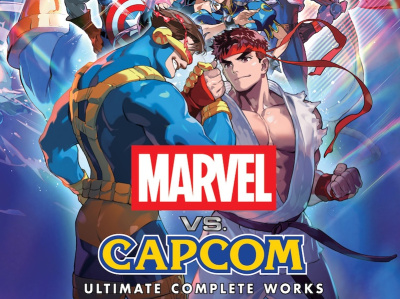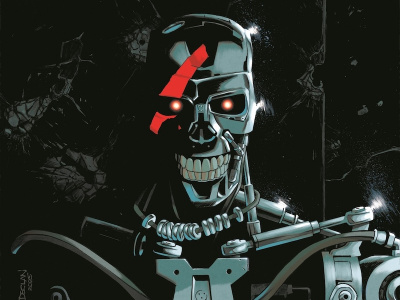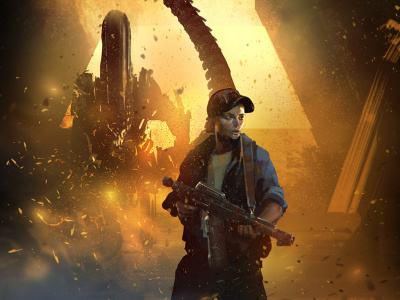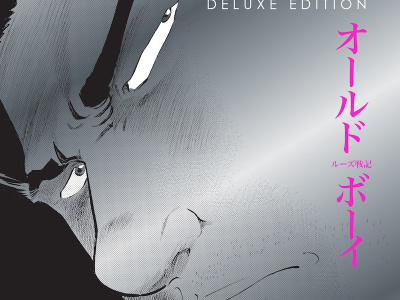We connected with co-creators of Stan Lee’s Genesis, a new Rocketship board game coming to Kickstarter and retail in the coming months, at San Diego Comic-Con. They also shared images from the game, see the Gallery below.
ICv2: We're talking about Stan Lee's Genesis, which we first reported on back in March (see “Stan Lee Tabletop Game”). When will that be coming out?
Tom Akel: Later this year. There'll be a Kickstarter with a retailer tier, obviously it'll be releasing in retail spring and summer of next year.
This is licensed from POW! Entertainment, is that right?
Akel: Yes, we're partnered with Stan Lee's POW! Entertainment. Rocketship is publishing the game through our T‑Minus 10 Games imprint.
Do you have other games in that imprint?
Akel: Yes, we have the Heroverse card game, which is available here [at San Diego Comic-Con] as a preview deck now. There'll be a Kickstarter for that next month; that'll also be available in the spring.
We're going to have the Brothers Bond tabletop game, and I can't tell you about the next one.
What's the connection with Stan Lee for Stan Lee's Genesis?
Akel: I worked closely with Gil Champion, the CEO of Pow! Entertainment. We were talking about doing a tabletop game together based on either Stan Lee's Backchannel, the graphic novel series that I co‑wrote with Stan (see "Rocketship Graphic Novels"), a new graphic novel series that's not announced yet that I can't talk about, and/or something completely original where you basically take on the role of Stan in the universe. And as we went through the different concepts, this was the one of the three that really landed.
This was the one where we're like, ‘All right, what's going to be the thing that fans will want the most to do? Let them have the power to create a universe every single time. They're building out the board; they're entering new characters (we still have to create characters for them to work with); those characters can change alignments; they can be on different teams.’
There's 200 characters we created for the game, and you're only going to enter as a player maybe five to seven average for a 45‑ to 90‑minute game. You're going to have a lot of variation in what you're doing and how the universe looks every single time you play the game.
Ryan, you designed the characters?
Ryan Benjamin: Yes, all 200 of them.
Did you do the visual design, or do they have characteristics associated with them?
Benjamin: There's some of them I designed from scratch, but for all of them it was just me for the visuals, just me. Some of them, Tom would scribble on a piece of paper and say, ‘Go this direction.’ Then I took his stick figures and I turned them into these characters.
Are these going to be on cards?
Akel: They're on cards that you'll draw in the game, put characters into play. When you put them into play, you'll have a standee of the character that will go onto the board and can move.
How would you describe the mechanics for the game?
Akel: It's a tile-based game (if you’re familiar with something like Carcassonne), where you're building out the board. For that [Carcassonne] mechanic, every round is similar. In this game, you're starting with a large nexus cluster and every player has their own starting point.
From there you're adding a tri-hex tile piece. Those pieces consist of general terrain resources (five different resources that you'll need to enter characters into the game), voids (wormholes that you can teleport characters through), and then locations, which are larger and are tied to the universe Ryan and I created for this.
There are locations based on some of the characters in the teams we invented for the game, and those have ties to some of the characters' powers just to make it interesting. There are 18 locations for the game. We only pull a few of those per game, so every game will be very different each time you come in.
As you gain resources (it is a resource management piece), you gain five different resources. Each character has their own resource combination. You use those resources to put a character into play, and you gain power points. When characters are in play, you will also wind up doing plots and events.
Events happen globally, and plots are for the player themselves to accomplish. There's ‘Get that MacGuffin,’ or ‘Save the President,’ or ‘Rescue my DNPC.’ There's all these different comic trope plots that come into play, and as you complete those, you'll also gain power points.
You have a power meter that goes up to 20. The first player to reach 20 power points wins. However, as you gain the ladder up the power meter, once you hit 10 power points, you have to take a token because with great power comes great responsibility. You'll get a great responsibility token that you have to spend every turn, which helps your fellow players.
You said ‘the universe.’ Is this a superhero universe in modern day America?
Akel: It's a superhero universe. We looked really closely at the construction of superhero universes, basically before the invention of comics going all the way back to mythology, and created different eras of characters.
We have mythological characters and historical characters. We have an entire pulp era, a golden age era, a silver age era, and a modern age era, and developed these characters specifically to fit into this universe, to very much evoke the feeling that they've already been there forever, that these characters have always existed since the dawn of time, the same way all of the modern mythology and superhero universes exist now. A lot of the characters will feel somewhat evocative of that, but they're all very unique.
Any idea what the MSRP range is going to be?
Akel: We're targeting $50.
Number of players, time to play, ages?
Akel: It's two to six players, age about 10 and up. We're playtesting that still with some younger players (including my children) just to make sure that's going to work, because of the complexity of some of the mechanics, but it is a very accessible game.
It's not a hardcore [game]. It's meant to be a family play experience with high replayability, 45‑ to 90‑minute gameplay time. The more players the longer it takes and the more fun it is, because the more characters you'll introduce into the universe and characters can battle and do things like that as well.
What's your distribution going to be like for your games?
Akel: We'll distribute direct to retail as well as we're going to work with the standard large game distributors. It'll be available through traditional game retail.
Anything else retailers should know about the game?
Akel: This is important. In the Kickstarter, there is going to be a 50 percent off free shipping retail level, as well as the core box and three expansion sets. When we did the characters, there's more than what's in the game. We blew out the entire history and backgrounds and personalities. There's a huge universe here that will expand beyond the game at some point. The focus right now is just making a great game.
We had so many characters that we couldn't fit it all into what's going to be the core box. A hundred of the characters are created and the majority of the events and plots and locations are in the core box and we're going to have three expansion sets.
Those expansion sets, initially, will be available through the Kickstarter. What those retail release dates are, we don't know yet. That will depend on the cadence of sales with the first one in retail, but we're making them.
If retailers want, those will be available to them in the Kickstarter immediately. They won't have to wait until they're released. They will be released at least six to nine months after the initial game, right?
How are you going to price those?
Akel: We're trying to get them to $20 to $25 each. Each will contain another 30 characters, another stack of event cards, plot cards, new locations, and standees.
OK, great. Thank you.
Click Gallery below for game images!
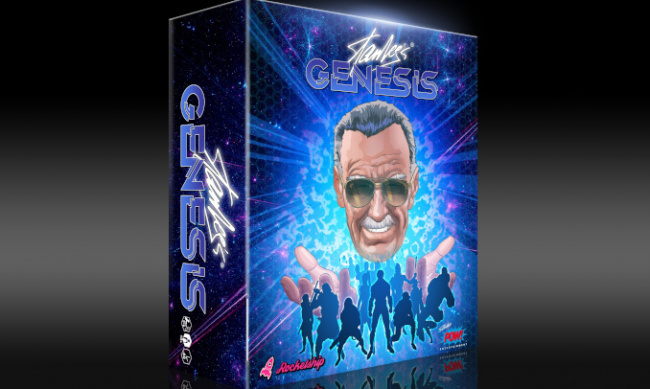
On the Upcoming Game, 'Stan Lee's Genesis'
Posted by Milton Griepp on August 14, 2023 @ 2:55 am CT
MORE COMICS
Marvel Art Books from Three Publishers
July 30, 2025
Three different publishers are offering Marvel-themed art books in coming months.
'Time Before Time' Co-Writers Reunite for New Series
July 30, 2025
McConville and Shalvey, who co-wrote the time-travel mystery Time Before Time, join forces for the next arc of The Terminator.
MORE NEWS
Adventure Set, Miniatures for ‘Evolved Edition’
July 30, 2025
Free League Publishing announced the Rapture Protocol Cinematic Adventure Set and Rapture Protocol Miniatures Set for the ALIEN RPG: Evolved Edition.
Eisner-Winning Manga Inspired Two Films
July 30, 2025
The manga, which won a 2007 Eisner Award, inspired both the 2003 film by Park Chan-wook and the 2013 remake by Spike Lee.



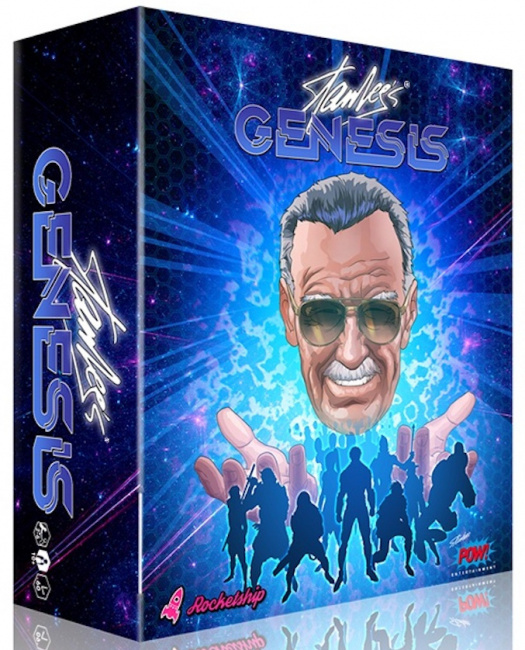


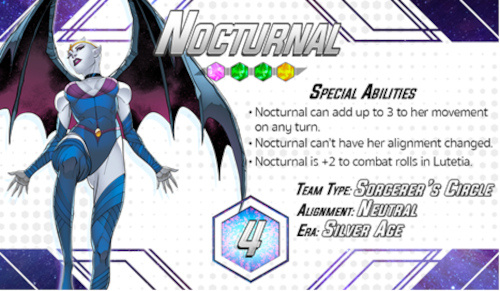
 View Gallery: 10 Images
View Gallery: 10 Images 